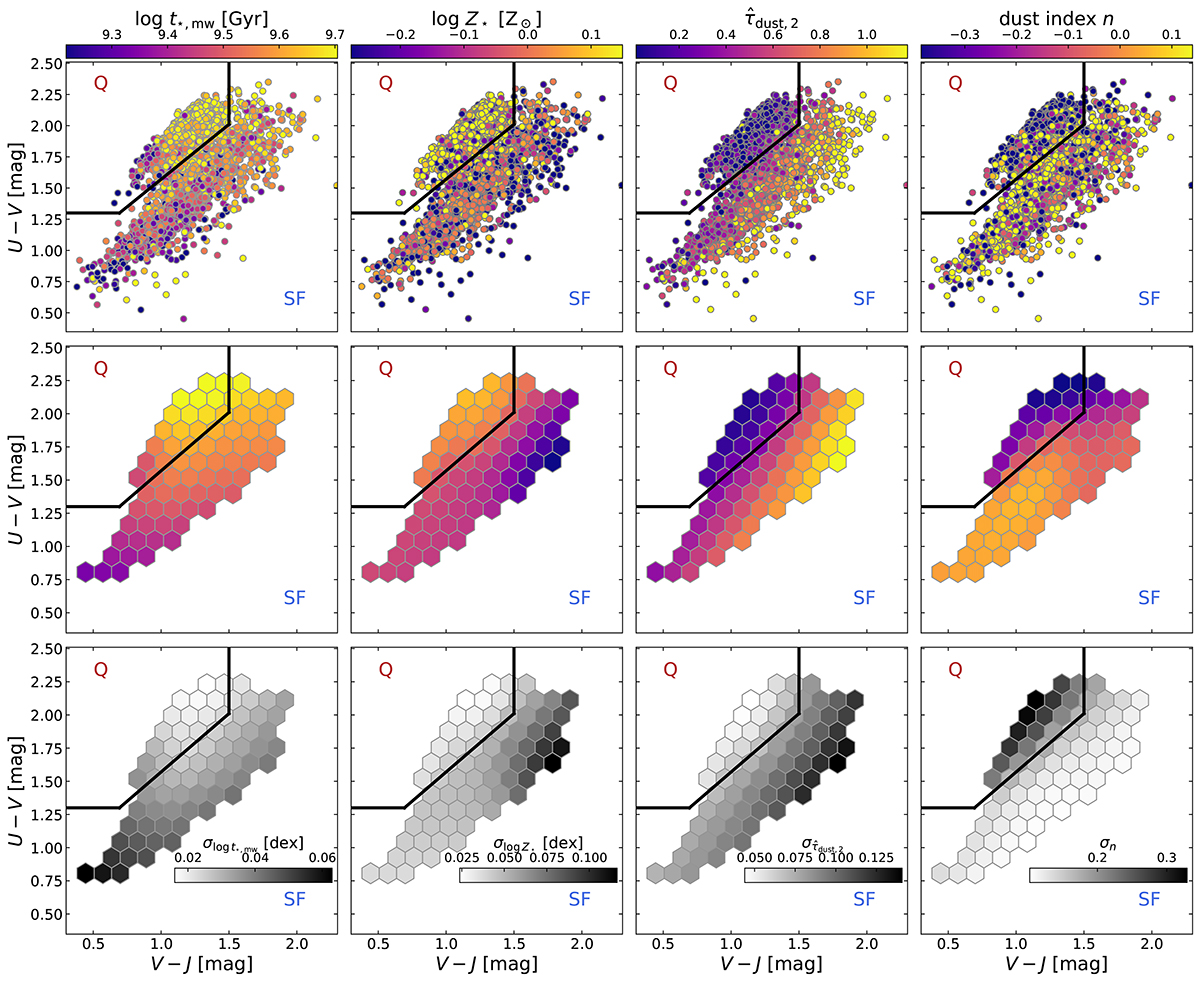Fig. 12.

Download original image
Mean stellar population and dust properties in the UVJ diagram of our primary sample. From left to right: mass-weighted stellar age (t⋆, mw), stellar metallicity (Z⋆), dust optical depth in the V band (![]() ), and dust attenuation slope index (n). We use the definition of Muzzin et al. (2013a) to separate the galaxies into quiescent and star forming. The top row shows the individual data points, the middle row shows the average trends of the physical properties in the UVJ diagrams with the LOESS method, while the bottom row shows the average upper uncertainty in those properties. We required that each hexbin contains at least five galaxies.
), and dust attenuation slope index (n). We use the definition of Muzzin et al. (2013a) to separate the galaxies into quiescent and star forming. The top row shows the individual data points, the middle row shows the average trends of the physical properties in the UVJ diagrams with the LOESS method, while the bottom row shows the average upper uncertainty in those properties. We required that each hexbin contains at least five galaxies.
Current usage metrics show cumulative count of Article Views (full-text article views including HTML views, PDF and ePub downloads, according to the available data) and Abstracts Views on Vision4Press platform.
Data correspond to usage on the plateform after 2015. The current usage metrics is available 48-96 hours after online publication and is updated daily on week days.
Initial download of the metrics may take a while.


